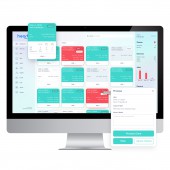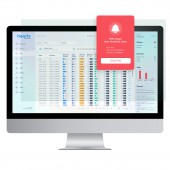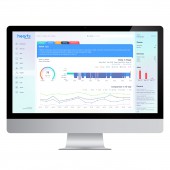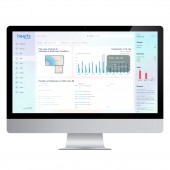
| THE AWARD |
| CATEGORIES |
| REGISTRATION |
| SUBMIT YOUR WORK |
| ENTRY INSTRUCTIONS |
| TERMS & CONDITIONS |
| PUBLICATIONS |
| DATES & FEES |
| METHODOLOGY |
| CONTACT |
| WINNERS |
| PRESS ROOM |
| GET INVOLVED |
| DESIGN PRIZE |
| DESIGN STORE |
| THE AWARD | JURY | CATEGORIES | REGISTRATION | PRESS | WINNERS | PUBLICATIONS | ENTRY INSTRUCTIONS |
Hearts Health Monitoring Platform by Ruimin He |
Home > Winners > Design #126663 >Interview |
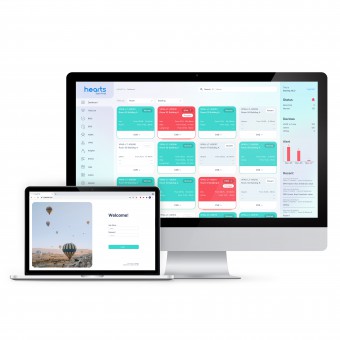 |
|
FS: What is the main principle, idea and inspiration behind your design?
RH: I always take the Ten Principles for Good Design within my design. In this project, our standard is that Is the interface clear enough? Is the interaction making sense? How many steps when users get their needs?
FS: What has been your main focus in designing this work? Especially what did you want to achieve?
RH: We focus on the user experience in particular to various user groups. So our consideration and test of the design result is pretend to be a fresh user as using it at first time. If the interface and interaction is clear and easy enough for fresh users, it is successful.
FS: What are your future plans for this award winning design?
RH: Tell our clients and public.
FS: How long did it take you to design this particular concept?
RH: We took around 1 month from concept to initial version.
FS: Why did you design this particular concept? Was this design commissioned or did you decide to pursuit an inspiration?
RH: The rapid growth of the aging population worldwide, which increased dramatically to 703 million in 2019, points to the challenges of long-term care and aging in place. Meanwhile, the global pandemic has shed a light on many gaps, such as remote health monitoring and telehealth service. So, we bring this solution to tackle this difficulty, with smarter system design, by providing prompt and proactive service of in-depth knowing for patients.
FS: Is your design being produced or used by another company, or do you plan to sell or lease the production rights or do you intent to produce your work yourself?
RH: It is a SaaS platform - Software as a Service. So we sell this software to another companies and organizations with our service and support.
FS: What made you design this particular type of work?
RH: Good design can evoke people's feeling, so that I use more color within it to try to represent the respiration and make people refreshen when looking at this interface.
FS: Where there any other designs and/or designers that helped the influence the design of your work?
RH: Not really because it is business.
FS: Who is the target customer for his design?
RH: Our target customer is more than one, such as health care centers, medical institutes, property managements, and governments or health organizations and so on.
FS: What sets this design apart from other similar or resembling concepts?
RH: I want to make this work distinguish from general health system interface by colorful background represented respiration. Also empower it with auto data analyze, as opposed to serving as notification tool.
FS: How did you come up with the name for this design? What does it mean?
RH: The name of hearts is merging the letters HE from health and ARTS from AI based Radio and Thermal Sensing. It means our goal and capacity together.
FS: Which design tools did you use when you were working on this project?
RH: Sketch and Photoshop.
FS: What is the most unique aspect of your design?
RH: This design is combined art and technology integrated with AIoT devices. It does not only consider the interface and interaction by designing the user process, but also has some automatic functionalities, which collaborate seamlessly.
FS: Who did you collaborate with for this design? Did you work with people with technical / specialized skills?
RH: I work with developers and algorithm engineer for design achievement.
FS: What is the role of technology in this particular design?
RH: Technology ensures the platform works seamlessly with the AIoT devices and juggling the health data across cloud. Also, advanced algorithm learns from user's threshold and record the data automatically with camera-free.
FS: Is your design influenced by data or analytical research in any way? What kind of research did you conduct for making this design?
RH: Yes, we received different insights by observation and interviews with caregivers, doctors and medical staffs in care centers in order to fulfill their particular needs. Next is ranking the highest priorities requirements. Not only built the workflow of this portal, and we also made user journey with mood curve to find out the major problems and improve user-friendly.
FS: What are some of the challenges you faced during the design/realization of your concept?
RH: The challenge for this portal is about to balance the complexity of data and collected by smart devices. We need to consider that it does not only remain the intuitive interaction to caregivers, but also encourage medical staff to do health evaluation proactively with deeper functional like data comparison and trend analysis. So it is an important part to think providing the learning-free user experience with simplified, systematic and visualized to each user group.
FS: How did you decide to submit your design to an international design competition?
RH: We have strong confidence about our design and capacity. And We want to get the public approbation. It is good for our company reputation and commercial.
FS: What did you learn or how did you improve yourself during the designing of this work?
RH: My management skill is improved. Also I like to see my skills of design research finalization applied to this project.
FS: Any other things you would like to cover that have not been covered in these questions?
RH: So far so good.
FS: Thank you for providing us with this opportunity to interview you.
A' Design Award and Competitions grants rights to press members and bloggers to use parts of this interview. This interview is provided as it is; DesignPRWire and A' Design Award and Competitions cannot be held responsible for the answers given by participating designers.
| SOCIAL |
| + Add to Likes / Favorites | Send to My Email | Comment | View Press-Release | Translations |
